Finding signs of a black bear is one of the first steps toward successful bear hunting. Finding bear signs begins with locating their habitat and the food sources they prefer.
Related: How to tell a black bear sow from a boar.
Scout for signs of a black bear before you start hunting.
The last thing you want to do is go black bear hunting where there are no bears within the sound of your caller. However, you can increase the odds of being within earshot of a bear by scouting and gaining access to more prime hunting locations.
Scouting involves three steps; locating suitable habitat, searching for sign (tracks, scat, and tree rubs), and then aging the evidence.
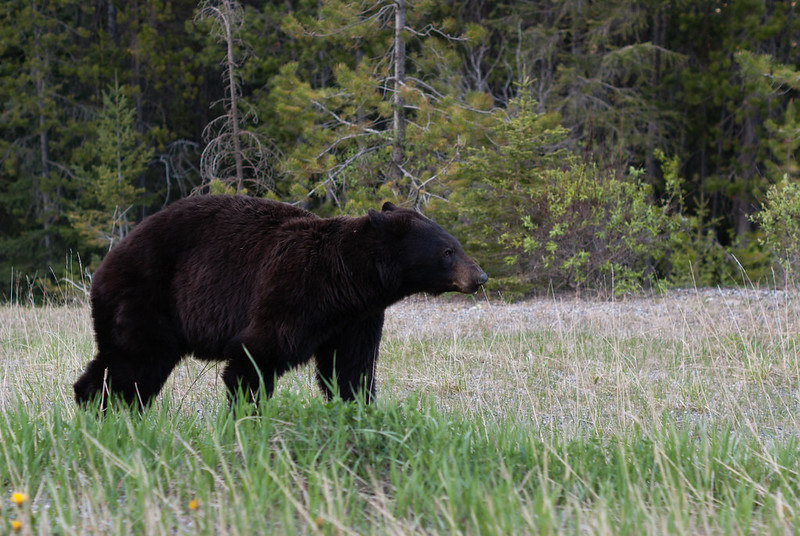
Sings of a black bear: Locating habitat and food sources.
Black bear habitat.
Black bears live throughout most of North America (except for the Great Plains). They prefer ample deciduous or coniferous forests that offer hefty ground foliage and rough terrain to use as cover. The best locations will offer a variety of fruits and nuts and have a nearby water source.
Black bear diet.
About 85% of a black bear’s diet is vegetation. Hard-masts are a favorite. Look for oak trees with acorns, hazelnuts, and whitebark pine nuts.
Black bears prefer fruits like blueberries, dogwood, raspberries, strawberries, and blackberries.
Black bears also eat insects such as grasshoppers, termites, ants, worms, wasps, and bees. Big honey fans will tear apart trees to reach the hives hidden inside.
If orchards or farms are nearby and the bears can get to them, they’ll also eat corn, apples, honey, and peaches.
Other than dead animals, black bears focus more on young whitetail fawns than adults. A ten-day-old fawn can outrun a black bear. Researchers believe bears can detect the scent changes a fawn undergoes at about day ten and will ignore them at that point.
Where baiting is allowed, it can draw in some large black bears.
Related: How to tell a bear sow apart from a boar.
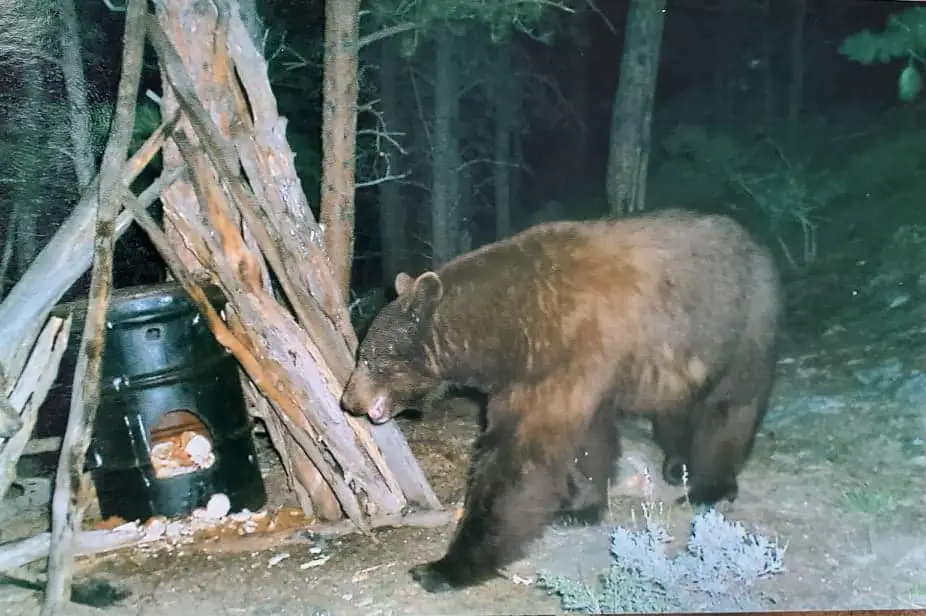
How to use signs of a black bear.
Black bear sign is the physical proof left behind by the presence of black bears in the form of tracks, trails, scat (feces) paw prints, and tree rubs. Read this article on how to identify black bear poop.
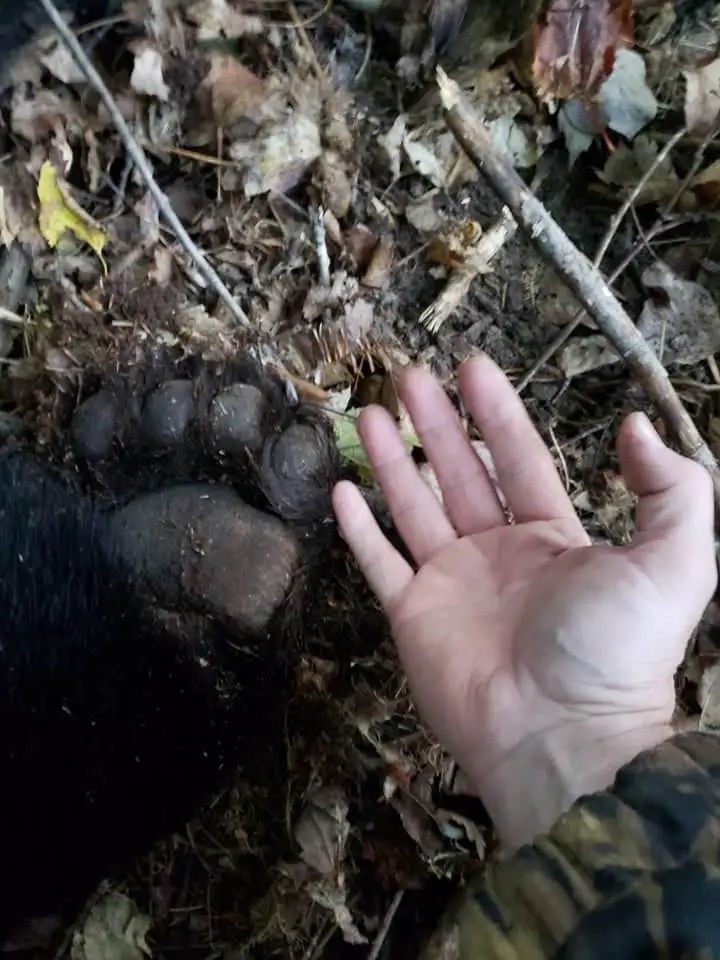
Signs of a black bear: Black bear tracks.
Bears walk on the soles of their feet (plantigrade). So, barring they walk on soft dirt or in mud or snow (as seen below), there’s not likely to be a clear-cut track for you to find.
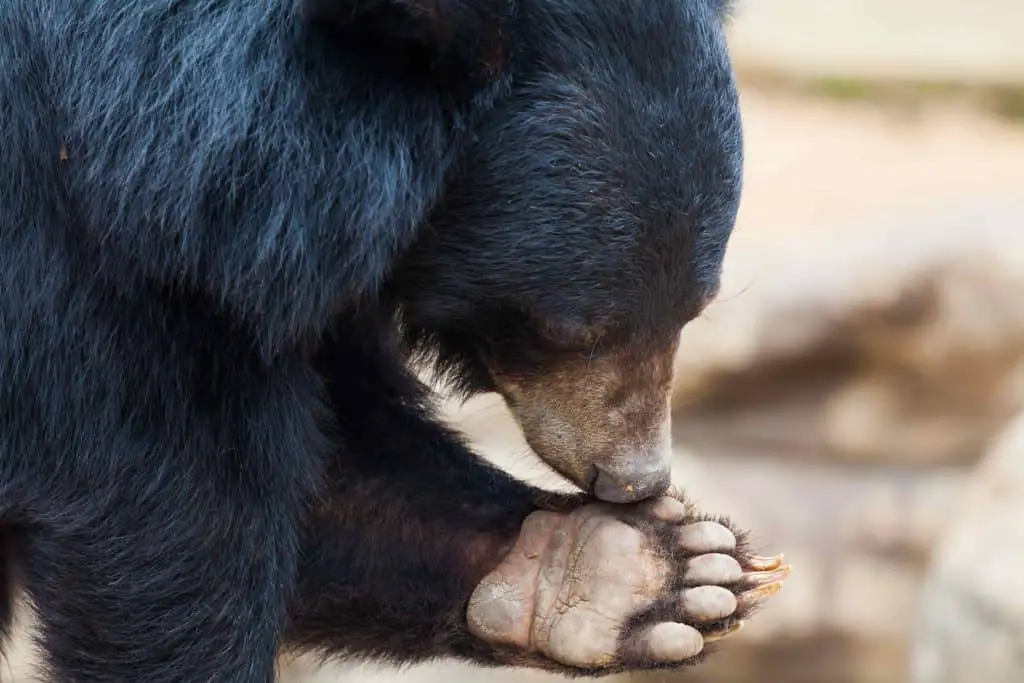
Identifying a black bear’s print is simply a matter of noting the size of the print and the four or five toes on each paw. While black bears have five toes due to their walking style, the small inner toe on the outside of their feet doesn’t consistently make contact with the ground.
Related: Calling bears during the fall feeding frenzy.
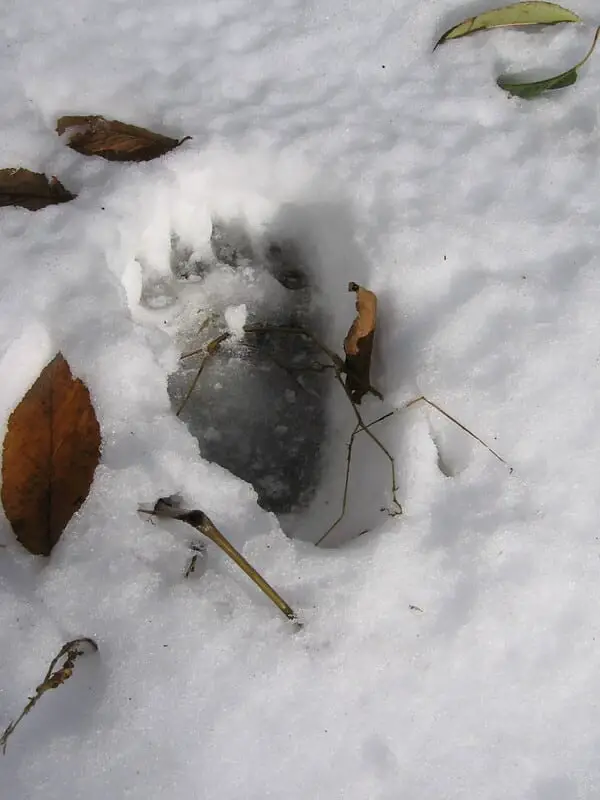
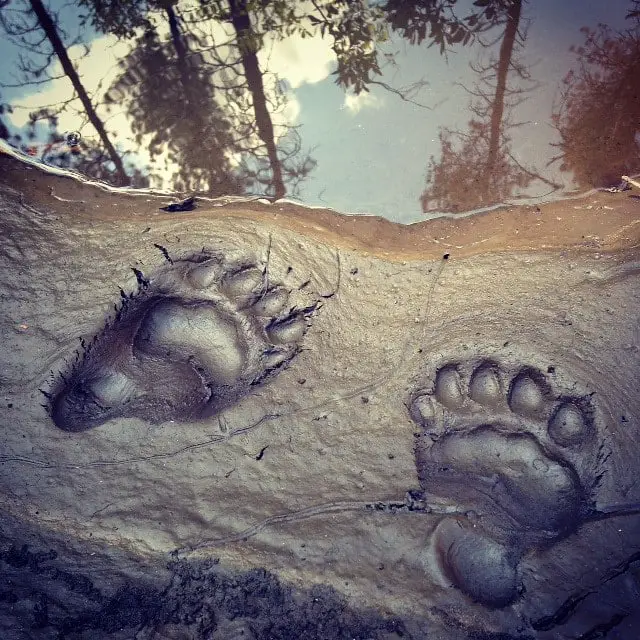
As with coyotes, foxes, and bobcats, a black bear’s front paws are broader than their rear paws.
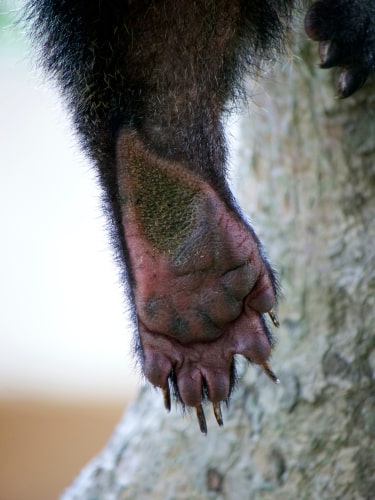
Signs of a black bear: Aging tracks in sand, mud, and snow.
As noted, there are only three types of soil that retain good black bear prints; sand, mud, and snow. Here is how to age them in all mediums.
When it comes to aging the black bear tracks you found, the weather in the days leading to your discovery is critical. While mud retain prints the longest, snow is a common weather feature during most regular black bear hunting seasons and frequently provides the best track aging information.
There are two degrees of freshness for black bear hunters when aging tracks: Tracks more than a day old and only 0-3 hours old.
Tracks older than 24 hours provide you with proof that a black bear inhabits the land. For most hunters, this is enough to scout out the area for an excellent calling stand location and return later to hunt the spot.
0-3 hour old tracks mean anything from perhaps still within calling range to you spooked them coming into the area.
Aging black bear tracks in the snow.
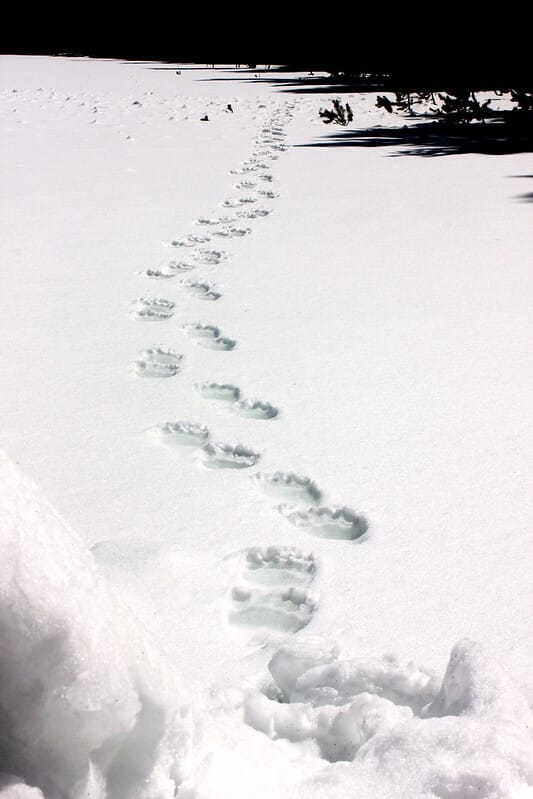
It’s all about the recent weather:
- Tracks in snow start sharp and clean.
- As the temperatures rise, those sharp edges round off.
- Ice crystals develop inside the print as temperatures dip below freezing.
Tracks in deep snow are more difficult to age than those in light snow. With deep snow, you’ll have to examine the kicked-out (excavated) snow to determine its age. Excavated snow is exposed to the elements, especially melting.
You know they were made after the last snow accumulation if good clear tracks in the snow have no snow in them.
Has any snow built up inside the track if the wind blows strong enough to move the snow on the ground?
If you find the track has an icy surface in the morning, then the track froze at some point overnight.
Check for ice crystals if you find clean, new tracks in the morning. No ice crystals mean it’s from that morning.
If you find a fresh sharp track when the temps are above freezing or the sun is shining, and the sky is clear, that track is new and hot. 0-3 hours.
Aging black bear tracks in the mud.
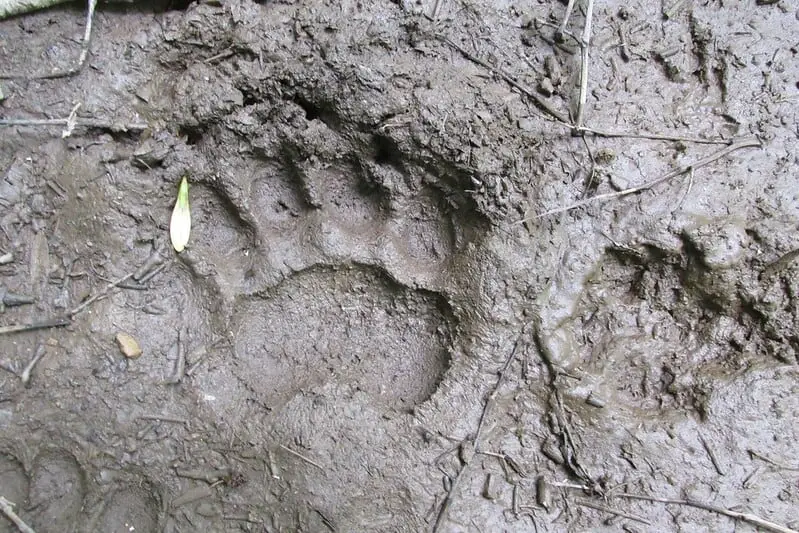
With mud, knowing the recent weather still plays an important role, but now we can add gravity to the list of things that aid you to track.
If a black bear fled minutes before you arrived and left tracks in the mud, here’s what you’ll find.
Along the outside of the print, there will be fissured walls and small bits of soil. Gravity will soon pull these materials down into the print. If none have yet to fall, the track is exceptionally fresh.
As that track ages, the first changes occur in the color of the cracks and fragments displaced by the black bear’s paws. These slivers and the print’s edges will dry out quicker than the print itself.
As time progresses, the track’s sharpness will fade, and its edges will round as gravity takes hold.
Eventually, debris will fall into the print, the rain will gather in it, and heavier rain will wash it away. Knowing what day it rained or when the wind would have been blowing hard enough to move debris into it will help you estimate the track’s age.
Aging black bear prints in the sand.
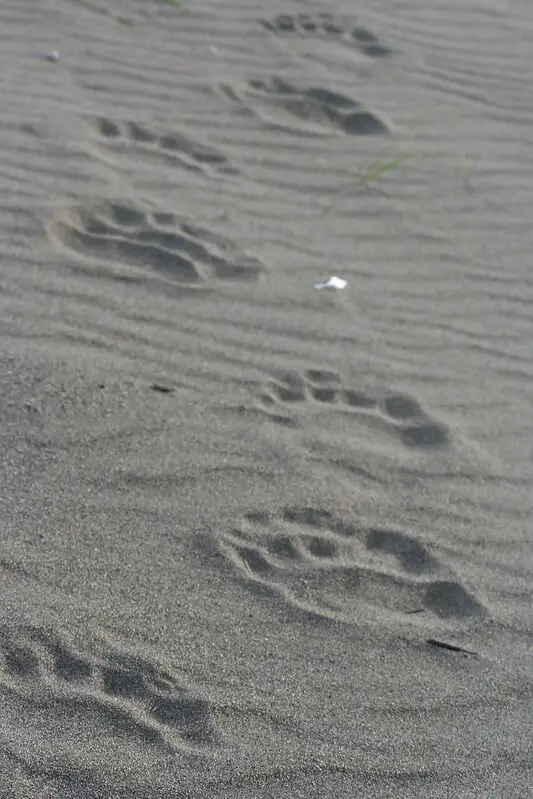
The most recent tracks in the sand will have raised surfaces near the crests of their walls that have not yet had time to begin to dry out. If you find a print in this condition on windy or sunny days, it’s 0-3 hours old.
A print found in the early morning with no dew is from after sunrise. If it has moisture in it, it’s from some time before dawn.
If the track appears fresh and dry but it recently rained, it’s from after the rain ceased.
Signs of a black bear: Black bear trails.
Almost like every other animal in the woods, black bears let the deer do all the heavy lifting (trailblazing) and stick to deer paths when not using logging roads or other artificial trails.
Heavily traveled bear paths, lanes created by multiple bears constantly traveling on the same ground for years, are simple to spot. The track will consist of a series of evident impressions in the land that mark where each bear stepped in the same spot as the preceding bear.
You will find bear paths at frequent road crossing sites and leading past marking trees.
How bears mark trails and how you can find them when hunting black bears.
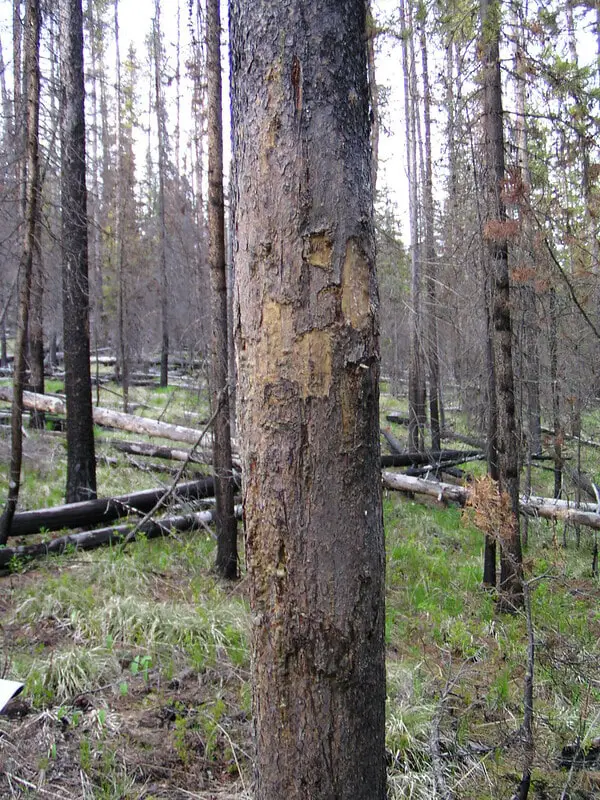
If you ever had a trail camera that got several pictures of a black bear approaching it, and it was stripped off of the tree, you know how much black bears love rubbing against trees.
Rubbing and scratching their backs, heads, and shoulders is just one way black bears mark trees. MarkIng trees, that’s really all they are actually doing to trees. Bears are not removing their winter coats, scratching an itch, or applying sap as insect repellent.
Bears mark trees, mostly during mating season, to communicate with other bears. However, since most black bear territories join together at points, the males like to make their own “no trespassing” signs. They do this by putting their stink on a stick and scratching and biting trees that border their territory.
Okay, you get that rubbing leaves a scent behind, but what about the biting and scratching? Well, the first thing you notice about marked trees is their visibility. Marked trees are supposed to be seen by other bears.
Therefore, when another bear investigates a marked tree, it can use the rubbed in scent to identify the maker of the mark. However, the height of the scratches and bites tells them the size of the scratcher or biter.
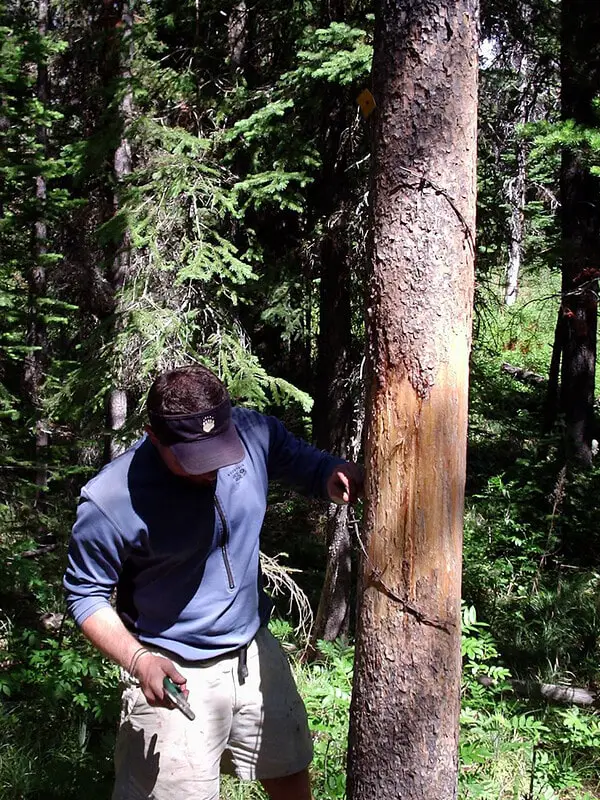
You’ll note that males make the marks, but both sexes investigate the marked trees? There is no proof boars mark trees. Boars have only been observed sniffing at them.
While all the reasons behind rubbing, scratching, and biting are interesting, it’s the sign left behind that helps you, the black bear hunter.
Bears mark trees frequently and often use the same tree for generations. These repeated marks leave a bear trail as prominent as blazed trees on a property line.
Find the marks, find the black bear’s property line.
What you should look for if the trail isn’t apparent to you. Leaning trees with little to no vegetation around them. Check for hair caught in the bark on these trees at about two to five feet high. Now check for scratch marks running vertically or note marks running horizontally between five and seven feet above the ground.
Once you have found a leaning-marked tree, you can find the trail by looking in the lean direction. The trail near marked trees is easier to spot because the male bears will stomp and grind their feet as the walk up to the tree.
Stomping (another form of scent marking) further deposits the bear’s sex, identity, and reproductive status on the bear’s trail.
These routes are often incredibly distinctive because bears frequently stomp-walk as they approach such trees. Stomp-walking is scent-marking in which bears stomp, twist, and slide each footstep.

